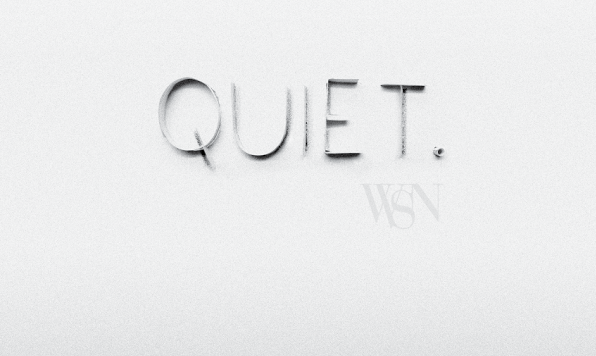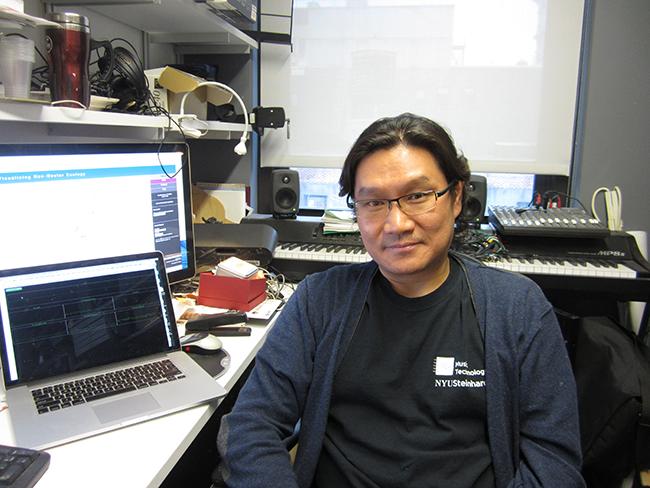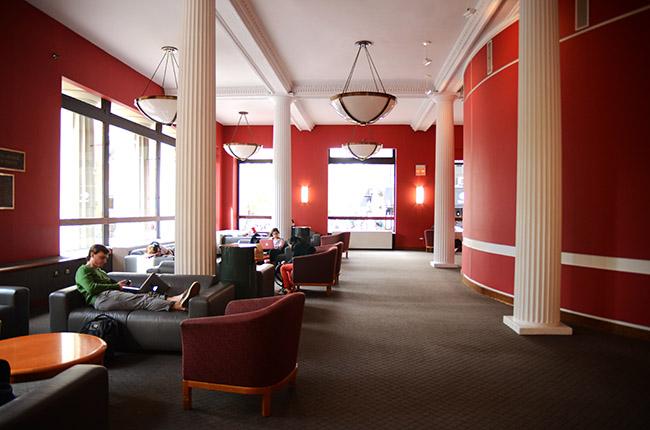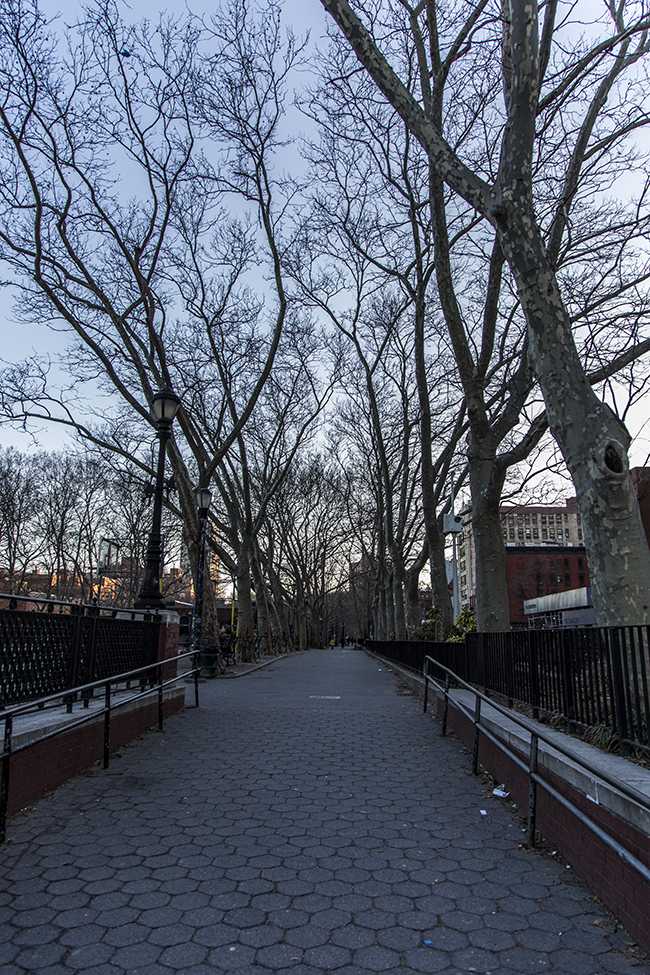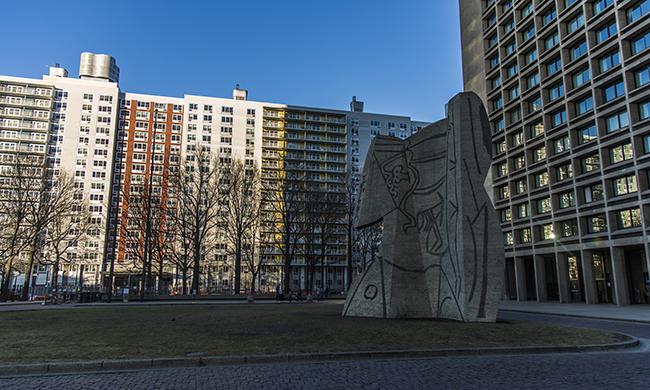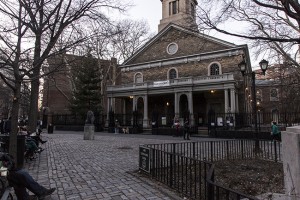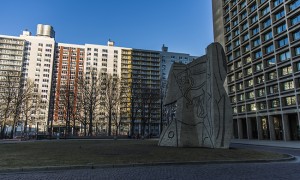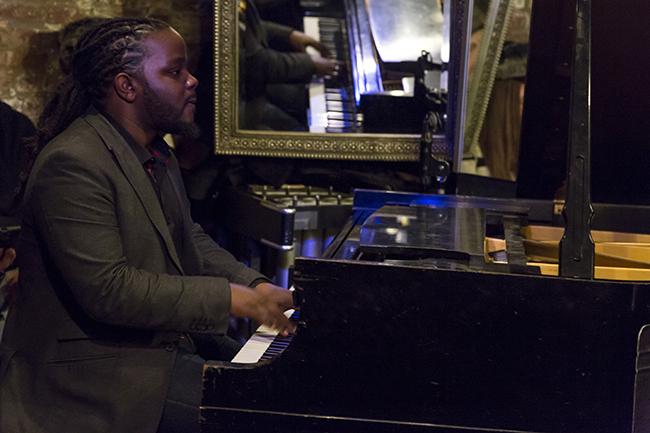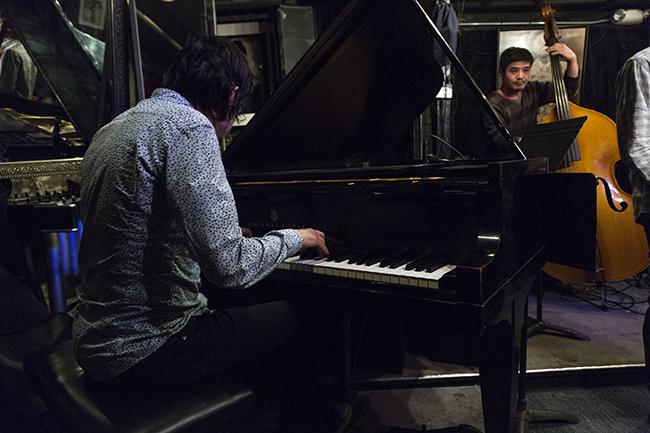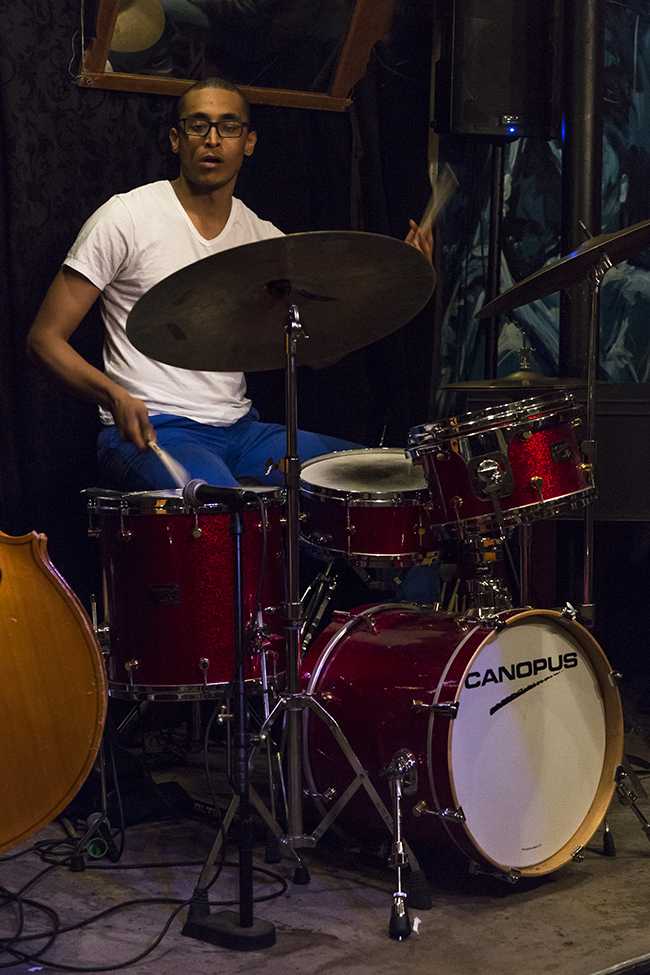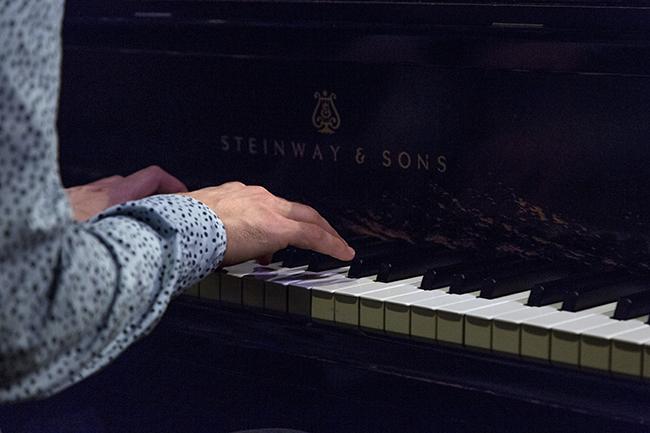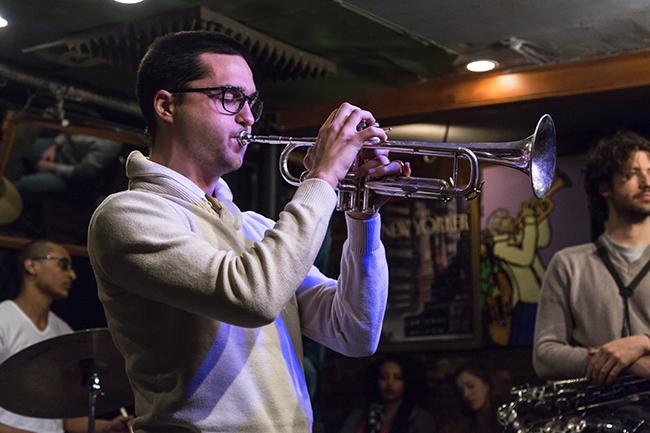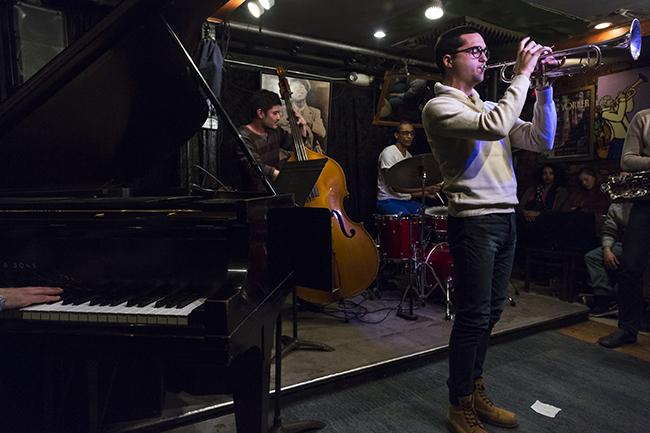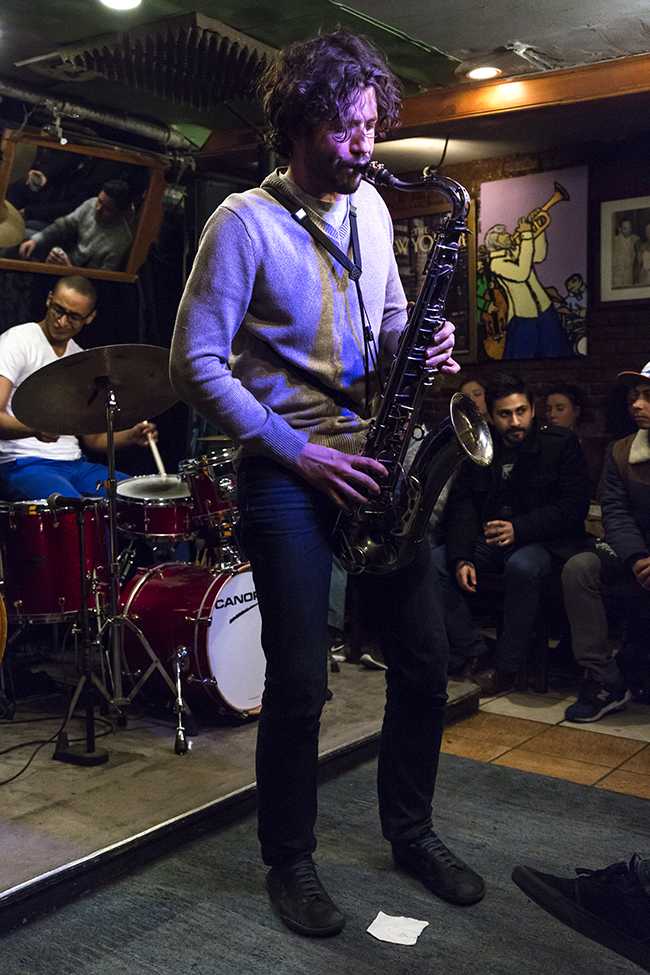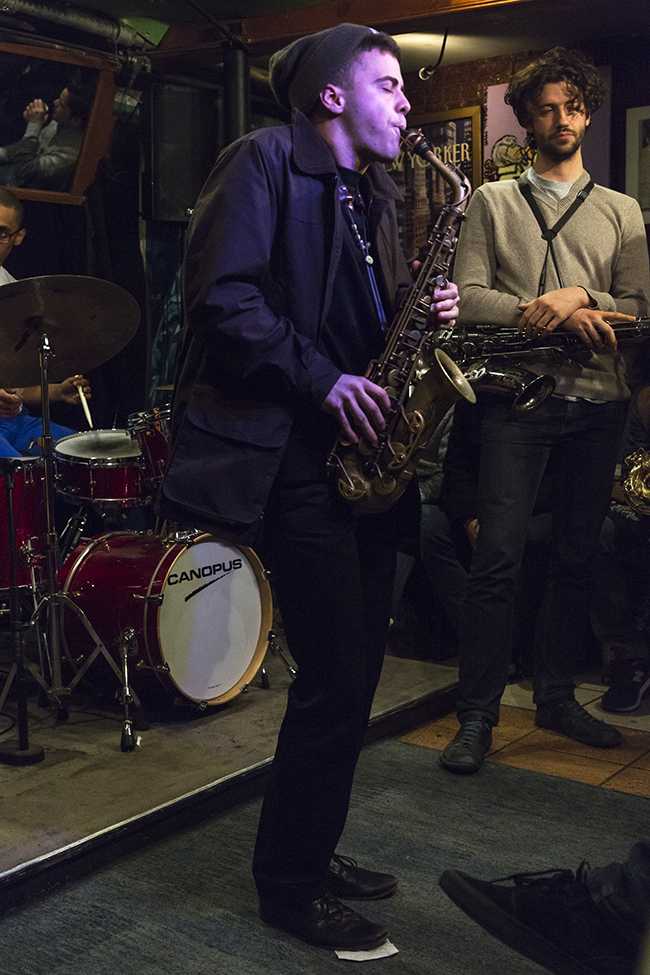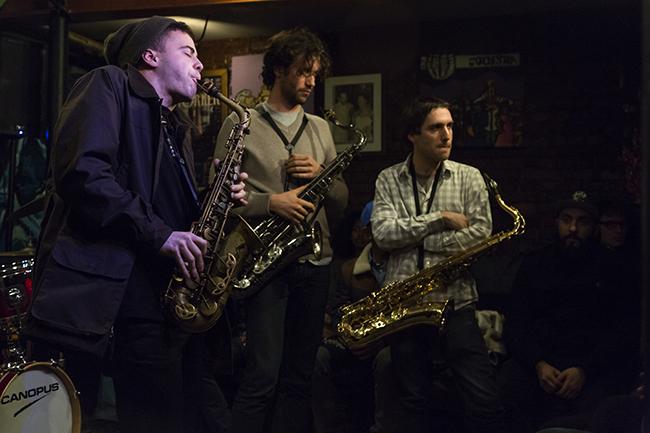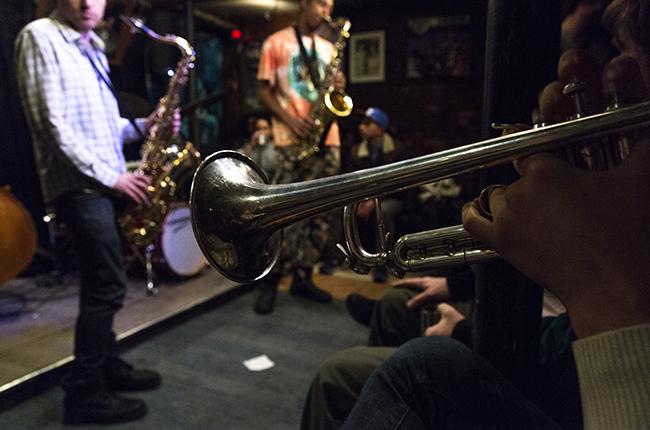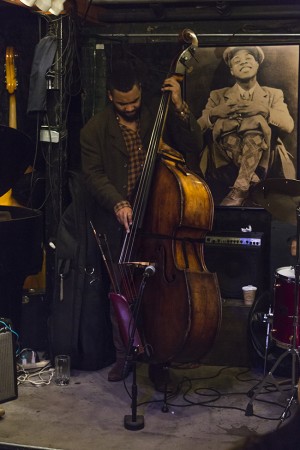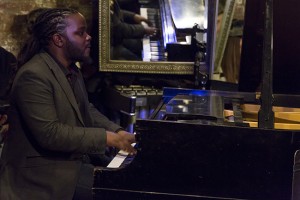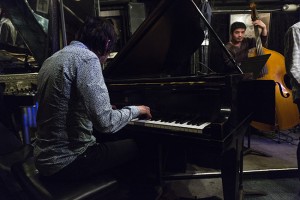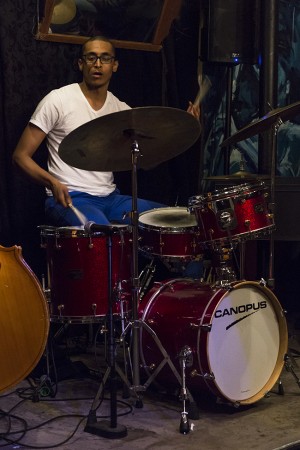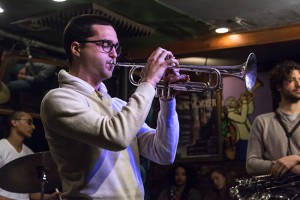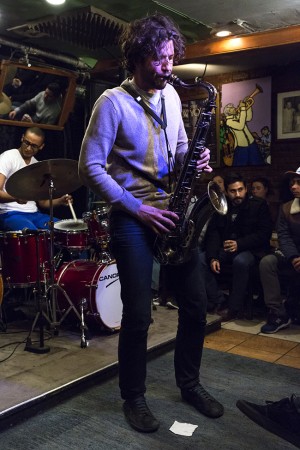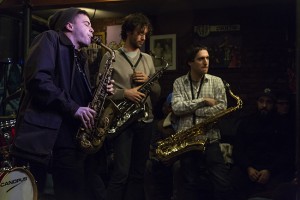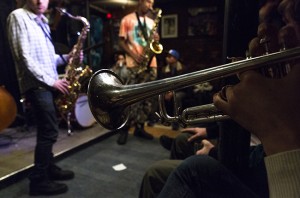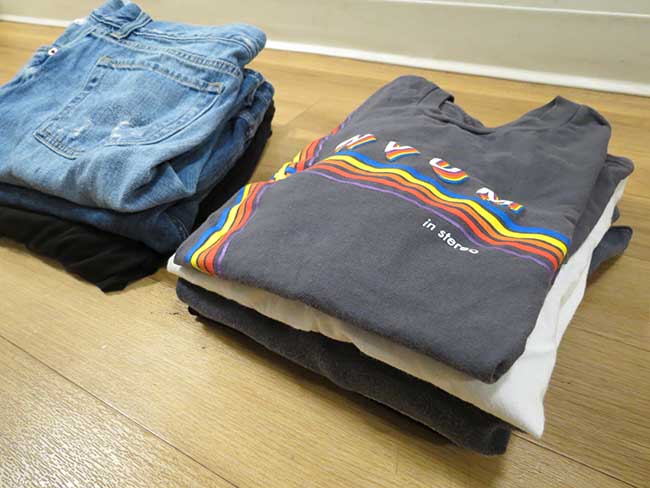The Quiet Issue
February 29, 2016
It is the phenomenon that exists in empty elevators, darkened parks, odd Bobst nooks and penultimate subway stops: quiet. In a city where noise penetrates every wall and loudness guarantees instantaneous, hard-won attention, quiet is an endangered species with little advocacy over its disappearance. After all, New York is notorious for its nonstop vivacity and pizzazz, not its quiet. This issue is not about celebrating silence, nor is it about condemning loudness — it is about how to escape the constant sensory harassment, how to enjoy quiet activities and where to appreciate the potential softness of sounds. Lower the volume. Aerate sound with silence. You may not always need so much noise in your life.
Don’t Ask for a Quiet City
Professor Tae Hong Park is currently working on an application that maps the sounds of various cities.
For the first few weeks of living in New York, I couldn’t sleep. My dorm by Union Square was across from a hospital and adjacent to major subway lines. My ears, attuned to years of the suburb’s silent nights, could not help but pick up every single pedestrian goings-on. But by the end of freshman year, I was used to the din of East 14th Street — I even craved it.
Professor Tae Hong Park, Director of the Composition Program and Joint Faculty for the music technology program at the Steinhardt School of Culture, Education and Human Development, is currently working on Citygram, an application that maps the soundscapes of various cities. Citygram aims to mitigate noise pollution by creating a cartographic history of noise. Park explained why the ability to quickly adjust to environmental extremes was not necessarily a good thing.
“It’s just human nature to adapt to the environment,” Park said. “Adaptation does not mean it’s getting better. It’s actually getting worse. We just adapt to it.”
Noise is New York’s invisible, yet ubiquitous culprit. Between the 8.4 million people living in the city, the 56.4 million tourists visiting annually and the population density of 53,095 people per square mile of the city’s 304 square miles, silence has become, like most things in New York, a commodity with a price tag.
“If you go to the more secluded areas of the city, or get out of the city — to New Jersey, Long Island — it isn’t really a solution because you’re adding to the traffic problem,” Park said. “It’s impractical; it’s expensive.”
New Yorkers deal with noise pollution not by piping down, but building a toxic resilience. Double-paned windows, insulated walls — these additions only apply to private places. The choice of solution here is closing the door on the problem. The most extreme and expensive way out is an anechoic chamber.
The quietest place in the city is a 520 cubic foot chamber in Cooper Union’s Vibration and Acoustics Laboratory. A matrix of fiberglass grids line the walls, wicking away noise and flattening soundwaves into straight lines. Every spoken word, inhale and fingersnap is suctioned into a black hole of silence.
Cooper Union students often use the anechoic chamber for research, but the chamber also attracts meditation groups. Once outside the anechoic chamber, any sound is loud in comparison, but in Cooper Square, the rumble of relentless construction is an almost painful contrast. Cooper Union professor Melody Baglione warned against the dangers of sound exposure.
“You accumulate all that exposure to loud sounds, and the more exposure you have, you gradually lose your hearing,” Baglione said. “That’s why taking the subway or working on the subway over time can cause permanent hearing loss. A high exposure level, such as a gunshot or excessively loud music, can cause instantaneous hearing damage.”
City-dwellers may develop hearing loss and sleep problems from noise pollution, which may lead to more serious health problems like deafness, heart disease and depression. However, the other extreme is also undesirable. Without the city’s sirens, construction and traffic, New York could not function. Too much quiet, like in the anechoic chamber, could be noxious. Absolute silence carries just as much danger as noise.
“It’s actually not healthy to be in anechoic chambers,” Park said. “You don’t hear anything, which means either you’ve lost your hearing, or you’re dead. Likewise, you don’t want to have a city that’s totally quiet — it means it’s a dead city.”
Before I visited Cooper Union’s anechoic chamber, Park showed me NYU’s semi-anechoic chamber in the Steinhardt Education Building. Inside, Steinhardt graduate students Jordan Juras and Chris Miller were doing research.
“We’re in here a lot,” Miller said. “We’re getting weirder. You can see yourself decoupling from reality.”
Without that sleepless first year by Union Square, I would not have been able to look out the window every time there was a parade or protest. However deafening the city may be, a silent city is more a sign of something wrong rather
than right.
“You reach nirvana when you reach silence,” Park said. “But if you reach nirvana, you’re dead.”
A version of this article appeared in the Monday Feb. 29, print edition. Email Audrey Deng at [email protected].
Quiet Spaces, Napping Places
We all miss nap-time from pre-school, but finding a way to fit a few z’s into that busy college schedule can be a pain. Here are the best ‘napademic’ resources that NYU has to offer for when you need to fit in a REM cycle but can’t make it home.
Silver Lounge,
100 Washington Square East
Tucked away on the first floor of Silver is the Silverstein Lounge and Study Center, the quintessential snooze spot. It has everything — large windows for natural lighting, both couches and armchairs to suit all preferences and inferior Wi-Fi access to drive away loud typers. Some pre-nap comfort food at Space Market or post-nap coffee at Oren’s is easily accessible on the other side of Waverly Place.
Kimmel 2nd Floor
The long couches on the 2nd floor of Kimmel on the opposite side from Peet’s Coffee are cozy, in a noiseless area and wonderfully convenient. Utilize this area to minimize the distance between the end of that long lecture and your carefree unconsciousness. The main drawback is the crowds, so you should refrain from kicking back and sprawling out of respect for your fellow students. This may be a deterrent for some but honestly if you’ve reached this point in your life and you can’t knock out in an upright position, you need to shape up.
Stern Building 3rd Floor
Any old student can walk into the Stern Building without immediately donning a suit and becoming a finance major, but it takes a truly skilled and treacherous individual to make their way to the 3rd Floor study area. These spaces are usually only accessible to Stern students through swipe access, but if you’re lucky, the magical gate to your heavenly slumber will be wide open, allowing you access to their comfortable seats, perfect temperature and free charging ports.
ARC Basement
Grab a soothing beverage at Argo Tea and then head downstairs in the Academic Resource Center to find a secluded couch behind the stairs. The perks are its central location on campus and easy access to printers. However, to be honest, this one should be a last resort. The harsh purple and white color scheme is off-putting and definitely not ideal for lucid dreaming. There’s a fair amount of activity around you and it’s not a quiet space so you may experience a frequently interrupted, restless stupor.
19 West Fourth St.
If you walk into 19 W 4th, turn the corner and walk back to end of the hallway, you’ll come across the most pristine couch in all of Lower Manhattan. It doesn’t look like it, but trust me, it’s broken in all the right places. It sinks in perfectly for ideal back support –– not too firm and not too soft. It’s essentially the closest you can get to a Sleep Number bed included in tuition. Andrew Hamilton wishes he had this couch. The problem is only one person can fit.
A version of this article appeared in the Monday Feb. 29, print edition. Email Zach Martin [email protected].
New York’s Breath of Fresh Air
Bust of Sylvette
122 Bleecker St.
Venture to the Silver Towers complex behind Coles Sports Center and you’ll find a giant angular sculpture in the middle of a field of grass. The surrounding buildings, which house NYU faculty members and grad students, block the noise of traffic and lend the area an eerie silence.
NYU owns the entire complex, including the 60-ton concrete sculpture in its center. The Bust of Sylvette, built in 1967 by sculptor Carl Nesjär, is an enlargement of a Picasso sculpture that depicts a woman’s bust. This concrete complex is shielded from the nearby streets and provides a tranquil spot to relax between classes without leaving campus.
LaGuardia Corner Gardens
LaGuardia Place, between Bleecker and Houston Streets
Just one block south of Bobst and closed off by a chainlink fence is the LaGuardia Corner Gardens. Once an empty lot, the garden, which was founded in 1981, exemplifies the power of volunteers to rejuvenate an area and to bring beauty into the community. Although access to the garden’s interior walking trails is limited from April through October, you can enjoy the garden from its exterior pathway at any time of year.
St. Mark’s Church in-the-Bowery
131 E. 10th St.
The second-oldest church in Manhattan is an Episcopalian place of worship. Between the various burial monuments in the East Yard of the church is a walkable stone labyrinth designed to symbolize the human connection between life and death. On the West Yard of the church, a quiet flower garden springs up around stone paths, benches and more burial vaults. The church grounds are open to the public, so you’re welcome to enjoy this peaceful oasis regardless of your religious affiliation.
Jefferson Market Garden
Greenwich Avenue, between W. 10th Street and Sixth Avenue
In 1931, a courthouse and a women’s prison were nestled together on this plot. In 1967, the courthouse was converted to a public library, and in 1975, a garden took the place of the demolished jail. From springtime through fall, you can traverse a third of an acre of green land containing countless flowers, shrubs and trees, as well as a fountain and a fishpond. For an extension of your quiet jaunt, head over to the Jefferson Market Library on the same plot of land.
Sara Delano Roosevelt Park
Houston Street, between Chrystie and Forsyth Streets
Escape the bustle of SoHo by taking a stroll through the three-block park and recreation area between the relatively unpopulated Chrystie and Forsyth Streets. This quiet strip features the M’Finda Kalunga Garden, the Hua Mei Bird Garden, which displays caged songbirds early in the morning, a soccer field and several playgrounds. The tall trees and hexagonal-tiled sidewalks will erase the Manhattan cityscape, if only for a
little while.
A version of this article appeared in the Monday, Feb. 29 print edition. Email Abigail Weinberg at [email protected].
Jazz Music Venues for the Night Owl
Smalls Jazz Club
183 W 10th St
Tucked away in the heart of Greenwich Village, Smalls Jazz Club lives up to its name with a simple narrow door. The real scene is waiting down the flight of stairs where a comfortable ambiance can be found. With musicians playing live music at the stage, you can sit in any row of chairs or lounge by the bar, tapping your foot to the beat. The quality music and relaxed environment is welcoming to come alone. Though the price isn’t cheap, it guarantees experience. Come listen to two sets for $20 or swing by late around 2 a.m. for no
cover charge.
Mezzrow
163 W 10th St
Located across the street from Smalls, Mezzrow shares the same owner and the same great musical experience. Additionally, a cover charge at Mezzrow guarantees free pass to Smalls for a prolonged night. Dim and intimate, the music room is ideal for fully immersing oneself in the music without distraction. Sit close to the front to get the best view, as space is limited. For the one-person party it will be no problem to enjoy the self-described “musical environment run by musicians for musicians.”
Terra Blues
149 Bleecker St
Situated conveniently close to campus, Terra Blues is another great venue to sway to phenomenal music. The standing stage allows for a better view to watch musicians passionately playing their instruments. The sound levels are just right to ensure that everyone can enjoy the music. With only a $10 cover, you will be treated to a whole evening of some smooth jazz.
The Jazz Gallery
1160 Broadway
The Jazz Gallery is a must to check out with its expansive space and high ceilings, located on the fifth floor of a loft. A no-frills environment, there is nothing to worry about except appreciating the music. As a non-profit, the Jazz Gallery has been committed to encouraging new jazz musicians for the past two decades. With regular shows and frequent culture-oriented series, the Jazz Gallery will be an experience in and of itself.
A version of this article appeared in the Monday, Feb. 29 print edition. Email Nina Jang at [email protected].
Quiet Sweet Treats Around the City
From apples to chocolate and carrots to candy, eating is just so loud. Whether it is crunchy cereal for breakfast or a crisp salad during lunch, masticating is a noisy task. Here are a few soft treats along with the best places NYU students can find them to provide relief during the raucous act of dining.
Marshmallows
Known for its vital role in a s’mores, marshmallows are also great when eaten alone. Although they are a little chewy, their silent stickiness can brighten anyone’s day. Popular ways of eating this muted confectionary include dipping it in chocolate, heating it over a campfire or just devouring it in its natural state. Though some of the best marshmallow locations such as Mitchmallow and Squish Marshmallows require a subway ride to obtain, a few closer locations such as The Sweet Life and Sockerbit can also satiate a marshmallow yearning.
Jello
From exciting elementary school snack times to electrifying college parties, this jiggly, wiggly and brightly colored dessert makes for the perfect hushed refreshment. Jello’s gelatinous consistency makes it easy to cut into fun shapes, and it forms perfectly into molds before it hardens. Ootoya Chelsea has interesting jelly options, such as green tea, but for more traditional flavors and tastes, Gourmet 53 boasts classic red cups of gelatin.
Whipped cream
This light, fluffy treat complements and finishes any dessert. Whether it is home-whipped or straight from the can, a dollop of whipped cream can soundlessly improve any sweet treat. Once called milk snow, whipped cream’s silentness is as relieving as a fresh snowfall amidst all the noisy food one encounters throughout the day. Although Manhattan does not have any stores dedicated to whipped cream, some of the best can be found at I-CE NY and Snowdays to accompany a rolled or shaved pile of ice cream.
Cotton candy
This fluffy carnival food takes the award for quietest food. From tearing the cotton candy’s to the moment it dissolves in your mouth, this sugary treat is inaudible. These traditionally pink and blue balls of fluff noiselessly sweeten and color a loud day of eating. Although Handsome Dan’s is most well-known for its snow cones and candy selection, this store spins fresh cotton candy for its customers. And if you’re willing to travel farther, Corner of Vermont in Brooklyn is a shop that specializes in all things maple — including cotton candy — for more adventurous foodies.
Email Diamond Naga Siu [email protected].
Keep Your Your Look Quiet and Minimalist
Minimalism isn’t just a fashion trend, it’s a lifestyle. A lifestyle that has been silenced for decades because of its subtlety has now come to the forefront of the industry as a dominating style. It’s hard to define because it’s different for everyone. But at its core, minimalism is a way to simplify your life, whether that is by organizing your apartment, condensing your beauty regime or cutting back on your purchases.
However, beware of distinguishing minimalism from normcore. Normcore is the gender-neutral fashion trend characterized by unpretentious, casual and bland clothing that hit the fashion scene in 2014. Adapting minimalist fashion elements simply means you are a conscious shopper and only buy what’s necessary. Here are some tips on how to implement minimalism into your wardrobe:
Invest in Quality
You won’t need dozens of T-shirts or jeans if you purchase only a few select, high-quality items. Look for T-shirts made of jersey and cotton and jeans made from mostly cotton (95 to 98 percent) with Spandex or elastane for comfort. You will get the most wear out of T-shirts in whites, black, greys and navys. When it comes to jeans, you can live off of a super dark wash, a medium wash, a light wash and a trendy wash in styles that make you feel great. Sweaters are another important item you should purchase based on quality. You cannot go wrong with cashmere.
Save up for Seasonal Outerwear
Whether you live in temperate climate or seasonal climate, outerwear is key. While it can be expensive, it is worth the investment. A winter parka, rain coat, trench coat, blazer, leather jacket and denim jacket are all essentials. Once again, you should invest in quality as the outerwear will last longer and your investment will be worth it.
Go Back to Basics with Accessories
While it may seem superfluous to purchase accessories when trying to attain a minimalist wardrobe, there are several pieces that many may find necessary: a nice watch, a go-to handbag and nice stud earrings to name a few. No outfit is complete without an accessory, even a minimalist ensemble. The difference is, your minimalist accessories are there for utility and practicality.
It is important to remember that there is no “one” minimalist wardrobe. What one person deems necessary may be optional to another. The key to your individual minimalist endeavor is simplifying your life, or in this case your closet.
Email Gabriella Bower at [email protected].

